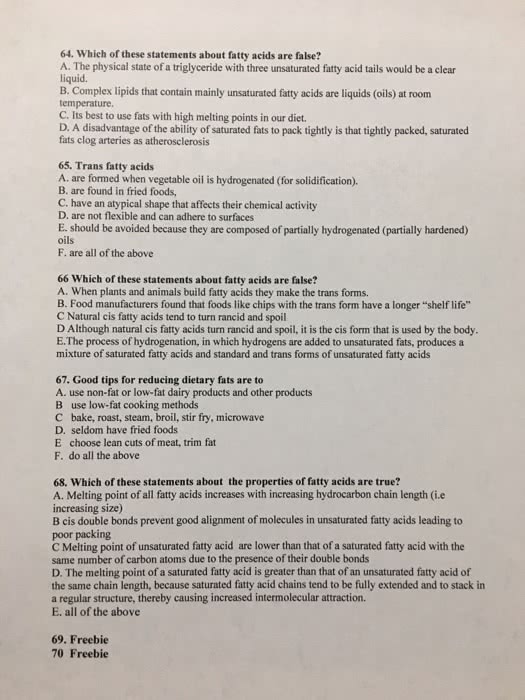BMB 401 Lecture Notes - Lecture 4: Phase Transition, Hydrophile, Signal Transduction
Document Summary
Lipids differ from proteins, nucleic acids and carbohydrates in that they do not polymerize. They serve many functions with their amphiphilic character such as with membranes, energy reservoirs and chemical messengers such as steroids. The melting point of fatty acids increases with increasing c atoms but decreases with increasing double bonds. Fatty acids are carboxylic acids with a long aliphatic tail. They are saturated when they lack c=c (oils) and they are unsaturated when they contain c=c bonds (butter). Unsaturated fatty acids exist in cis-trans isomers with cis favored. They can adopt 2^n cis-trans isomers (n = # c=c bonds). Naturally occurring fatty acids have an even number of c atoms. Fatty acids rarely exist in their free form, and usually there is esterification of the cooh group of the fatty acid with the oh group of glycerol. They are the major component of oils and fats. They are also stored in adipose tissues as energy fuel sources.


